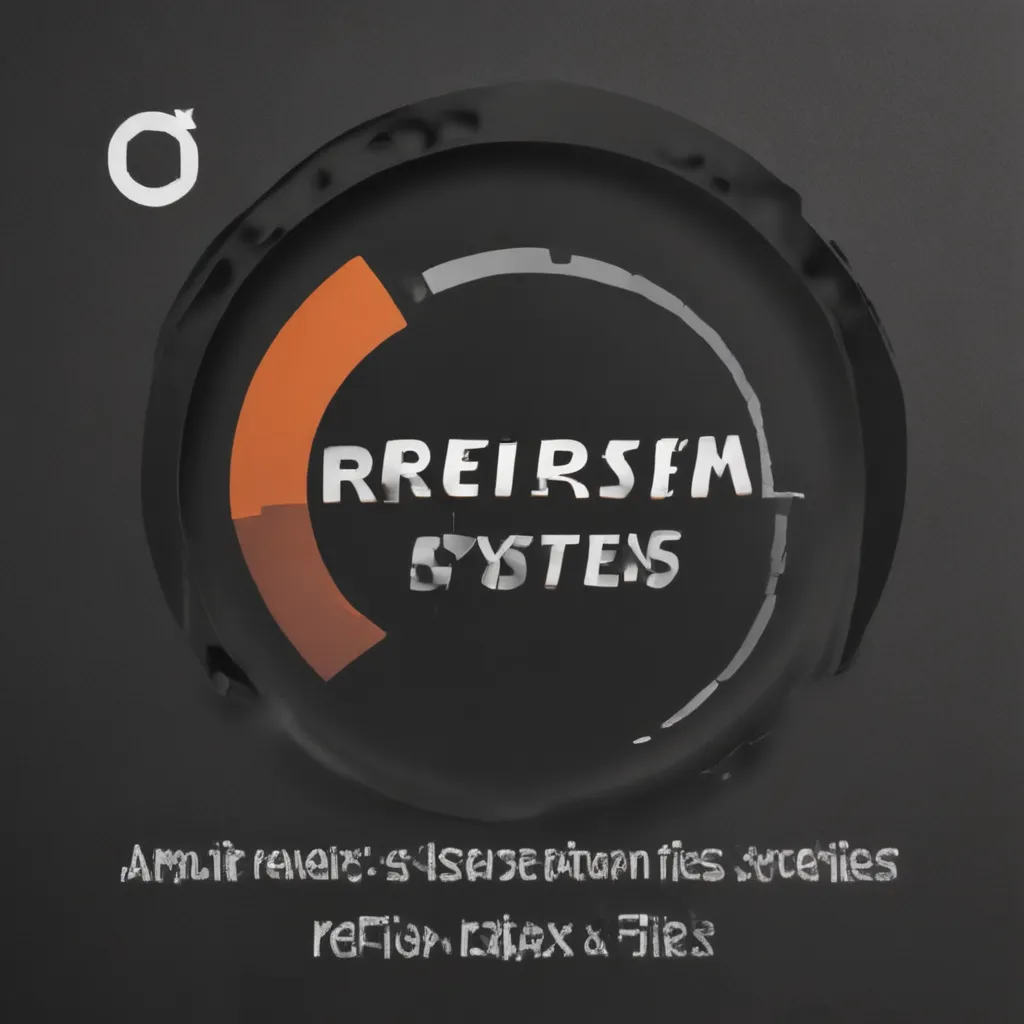Brace Yourself, Windows Friends – It’s Time to Fix Those Pesky System Files
As a seasoned computer technician, I’ve seen it all when it comes to Windows malfunctions. From the classic “blue screen of death” to mysterious system crashes, the root cause is often a corrupted or missing system file. But fear not, my fellow Windows warriors, for I’m here to guide you through the process of repairing those vital system files and restoring your PC to its former glory.
Prepare for Battle: Gather Your Weapons (er, Tools)
Before we dive in, let’s make sure you have the necessary tools at your disposal. The key player in our system file repair mission is the trusty System File Checker (SFC) tool. This little command line utility is your best friend when it comes to identifying and restoring corrupted system files [1].
But wait, there’s more! We’ll also be using the Deployment Image Servicing and Management (DISM) tool, which is like the big brother of the SFC. DISM can help us rebuild and repair your Windows image, ensuring that those pesky system files are back in tip-top shape [2].
Engage the Enemy: Unleashing the Power of SFC and DISM
Alright, time to get your hands dirty. Let’s start by opening an elevated command prompt. In Windows 10, 8.1, or 8, we’ll first run the DISM tool to prepare the battlefield [1]:
DISM.exe /Online /Cleanup-image /Restorehealth
This command may take a few minutes to complete, but it’s essential for setting the stage. If you’re on Windows 7 or Vista, you can skip this step and jump right into the SFC command [1]:
sfc /scannow
Now, sit back and watch as the SFC tool scans your system for any corrupted files and attempts to replace them with known good copies from a cache [2]. This process can take a while, so be patient and don’t close that command prompt window until it’s 100% complete.
Assess the Damage: Analyzing the Repair Results
Once the SFC scan is finished, you’ll be presented with one of several possible outcomes [2]:
-
No Integrity Violations Found: Congratulations, your system files are in pristine condition! You can breathe a sigh of relief and go about your day.
-
Corrupted Files Could Not Be Repaired: Uh-oh, looks like we’ve got some stubborn system files that won’t cooperate. Don’t worry, we’ve got a plan for that.
-
Corrupted Files Repaired Successfully: Huzzah, the SFC tool has triumphed, and your system files are now back in working order. You can do a little victory dance, but don’t forget to check the CBS.log file for more details [2].
March Forward: Tackling Unrepaired Corrupted Files
If the SFC tool couldn’t fix all the corrupted files, don’t panic. We’ve got a few more tricks up our sleeves. First, try running the SFC scan in safe mode. This can sometimes uncover hidden issues that the regular scan missed [2].
If that still doesn’t do the trick, it’s time to dig deeper. The CBS.log file, located in the %WinDir%\Logs\CBS\CBS.log directory, will provide detailed information about the files that couldn’t be repaired [2]. Make a note of these problem files, and we’ll work on manually replacing them.
Reinforcements Arrive: Manually Replacing Corrupted System Files
To replace a corrupted system file, we’ll need to find a known good copy from another source. This could be another computer running the same version of Windows or even a Windows installation disc [2].
Once you’ve located the good file, follow these steps:
- Take ownership of the corrupted file by running the following command in an elevated command prompt:
takeown /f Path_And_File_Name - Grant administrators full access to the file:
icacls Path_And_File_Name /GRANT ADMINISTRATORS:F - Replace the corrupted file with the known good copy:
copy Source_File Destination
Repeat these steps for each corrupted file identified in the CBS.log, and you should be well on your way to a fully repaired system.
Celebrate the Victory (and Prevent Future Battles)
Congratulations, brave Windows warrior! You’ve successfully navigated the treacherous waters of system file corruption and emerged victorious. Your PC is now back in fighting shape, ready to tackle any task you throw its way.
To prevent future system file issues, consider implementing a few best practices [3] [4] [5]:
- Keep your Windows installation up-to-date with the latest security patches and cumulative updates.
- Run regular virus and malware scans to catch any potential threats.
- Backup your important data regularly, just in case you need to perform a more drastic recovery.
Remember, the battle against system file corruption is an ongoing one, but with the right tools, knowledge, and a bit of determination, you’ll be able to keep your PC in prime condition. Happy computing, my friends!
[1] Microsoft. (n.d.). Use the System File Checker tool to repair missing or corrupted system files. Retrieved from https://support.microsoft.com/en-us/topic/use-the-system-file-checker-tool-to-repair-missing-or-corrupted-system-files-79aa86cb-ca52-166a-92a3-966e85d4094e
[2] Dell. (n.d.). How do I run the System File Checker in Microsoft Windows? Retrieved from https://www.dell.com/support/kbdoc/en-us/000126064/how-do-i-run-the-system-file-checker-in-microsoft-windows
[3] Microsoft Community. (n.d.). How to repair your system files using DISM and SFC. Retrieved from https://answers.microsoft.com/en-us/insider/forum/all/how-to-repair-your-system-files-using-dism-and-sfc/1021b42a-09ff-41a0-a95a-48f3ee3ae699
[4] AVG. (n.d.). How to Repair Corrupted Windows System Files. Retrieved from https://www.avg.com/en/signal/repair-corrupted-windows-system-files
[5] Microsoft Answers. (n.d.). How to fix corrupted system files. Retrieved from https://answers.microsoft.com/en-us/windows/forum/all/how-to-fix-corrupted-system-files/1811adc7-a720-40e3-ba7c-fa6e224ed8b3













